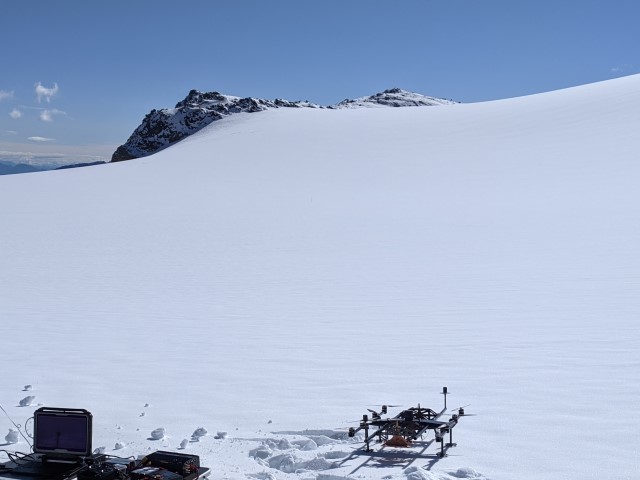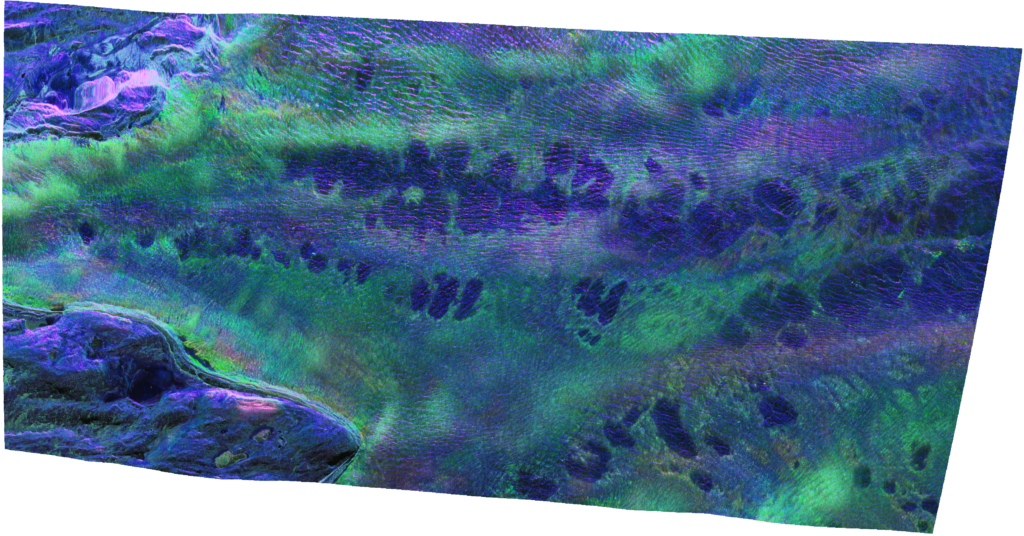SP1.1: A lightweight multifrequency radar system for snow and firn structure measurements
Subproject 1.1
A lightweight multifrequency radar system for snow and frin structure measurements
Typically ground-based GPR systems for geophysical applications consist of low frequency pulse radars that operate in the MHz frequency range. As those rudimentary radar concepts have proven to be easy to use and offer enough resilience to endure in rough environments in the past, the most recent and enormous advances in radar technology have almost exclusively been made in other fields such as automotive radar or personnel security scanner systems. Innovative GPR approaches can strongly benefit from these new radar techniques e.g. by multi-functional radar systems that utilize software-defined waveforms and measuring principles best adapted to the specific environment and measuring task.
A holistic hardware-software design based on cutting-edge technology is needed to obtain the maximum performance for the intended field of use. By this, enhanced mapping and surveying of subglacial structures will be achieved, and previously unsolved challenges linked to the measurement of ice and snow parameters in remote locations will be effectively addressed. A lightweight and easy-to-transport radar system will be developed within this project which will serve as a versatile sensor setup for multiple applications in remote glacial environments. For this, a multifrequency system will be implemented which will make use of the benefits of different frequency bands. E.g., typical GPR systems for measuring ice sheet thicknesses on alpine glaciers operate in the sub 200-MHz region as signals experience less attenuation but can only obtain comparably small bandwidths and therefore low resolution. Imaging Radars working in the >1GHz frequency range suffer from higher attenuation but can reach an outstanding resolution. Those and further advantages will be combined for maximum performance and flexibility adapted to each scenario.
For this purpose, suitable high-performance and meanwhile power and weight-saving transceiver frontend concepts need to be designed and tested for their usability. Furthermore, innovative antenna concepts need to be examined in order to address the requirements of lightweight and small size while maintaining excellent radiation characteristics over a wide/multiband frequency range. With the integration of localization techniques such as differential GNSS and other advanced self-localization techniques, it will be possible to apply ground-based SAR techniques for enhanced resolution and sensitivity of the overall system. The integrated digital backend will exploit cutting-edge radar algorithms which have to be expanded in order to combine data taken in different frequency bands for extracting an even wider range of parameters from the surveyed ice structures compared to a single band evaluation.
Examples for those results are amongst other things estimated water content in the snow/firn cover or the glaciers permittivity profile which is directly linked to the ice density. Integrated into vehicles such as UAVs the system will be capable of surface-based mapping of large areas in a time and cost-effective manner. The system will be tested extensively on Vernagt- and Hintereisferner. This subproject will collaborate with SP1.2, 1.3, 2.3 and 3.1.
For specific information on the subproject please contact: Prof. Dr.-Ing. Martin Vossiek; Institute of Microwaves and Photonics (LHFT), Cauerstr. 9, 91058 Erlangen, T: 09131-85-20773, martin.vossiek@fau.de, https://www.lhft.eei.fau.de/
Co-PIs: G. Krieger (DLR HR), T. Seehaus (FAU Geography), F. Navarro (U. Madrid)
Get to know our project affiliated PhD students

Danielle Gunders-Hunt
danielle.gunders-hunt@fau.de
I completed my master’s degree in Electrical and Electronic Engineering at the University of Western Australia, where I developed a strong interest in high-frequency technologies. Combined with my passion for nature and the environment, the application of radar technology to analyze glacial ice and snow structures is especially exciting, given the ongoing challenges posed by climate change and environmental degradation.
My PhD research within the scope of the IDP M3OCCA focuses on a high performance, flexible and easily transportable radar system to gain detailed insights into glacial structures and their variations over time.





